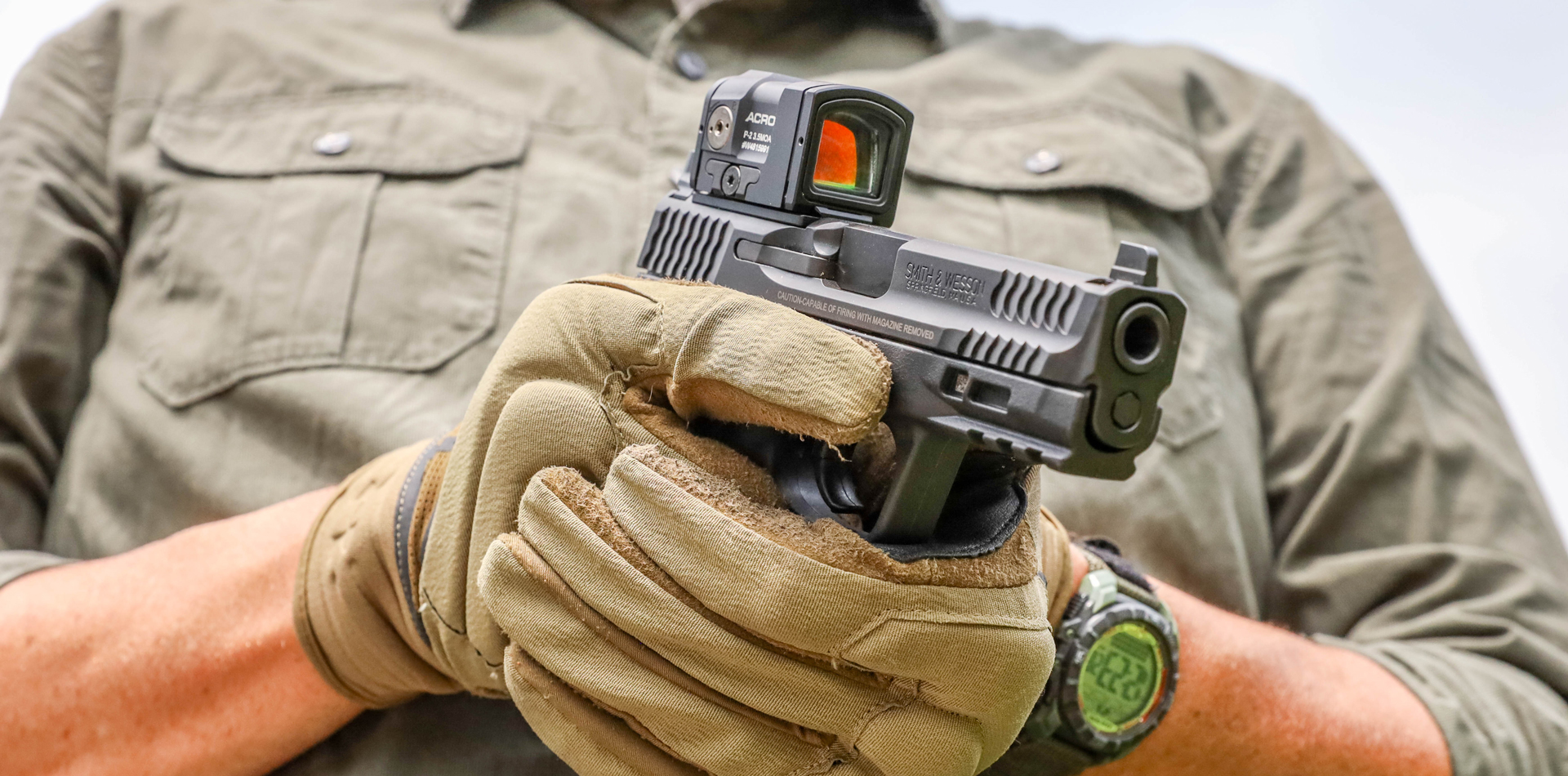|
In the world of firearms, technological advancements continue to reshape the landscape, leading to innovations that enhance both functionality and accuracy. One such innovation that has gained significant attention is the integration of red dot sights onto handguns. These optical devices, originally popular in the realm of competitive shooting and tactical applications, are now finding their way into the hands of everyday gun owners. As with any firearm accessory, there are distinct advantages and disadvantages to consider when deciding whether to equip a red dot sight on a handgun. In this article, we'll delve into the pros and cons of this trend, helping you make an informed decision.
|
 |
|
|
|
The Pros
|
1. Enhanced Accuracy
|
|
One of the primary benefits of incorporating a red dot sight onto a handgun is the potential for enhanced accuracy. Traditional iron sights require aligning the front and rear sights with the target, which can be challenging, especially under stress. Red dot sights eliminate this challenge by providing a single, illuminated aiming point that's superimposed on the target. This intuitive aiming method helps shooters quickly acquire and maintain proper sight alignment, resulting in more accurate shots, especially in fast-paced or high-pressure scenarios.
|
|
|
2. Faster Target Acquisition
|
|
Speed is crucial in self-defense and competitive shooting. Red dot sights offer a significant advantage in terms of target acquisition speed. With a red dot sight, there's no need to align multiple sights; shooters can focus on placing the red dot on the target, leading to quicker and more efficient target engagement. This is particularly valuable when engaging moving or multiple targets, where split-second decisions can mean the difference between hitting and missing.
|
|
|
3. Improved Sight Picture Consistency
|
|
Traditional iron sights can vary in terms of sight picture based on lighting conditions, shooter's eye position, and other factors. Red dot sights provide consistent aiming regardless of these variables. As long as the red dot is visible and on target, accuracy remains consistent. This feature is particularly advantageous in low-light environments where traditional iron sights might become difficult to see.
|
|
|
4. Reduced Parallax Error
|
|
Parallax error, which occurs when the sight's reticle appears to shift in relation to the target when the shooter's eye position changes, can affect accuracy. Red dot sights are designed to mitigate parallax error, offering a more forgiving aiming experience. This means that even if your eye isn't perfectly aligned with the sight, your shots are still likely to be on target.
|
|
|
5. Adaptability and Customization
|
|
Red dot sights come in various sizes and models, allowing shooters to choose the one that best suits their preferences and intended use. Additionally, many red dot sights offer adjustable brightness settings, allowing the reticle to remain visible regardless of ambient lighting conditions. This adaptability and customization ensure that shooters can tailor their sight setup to their specific needs, whether it's competitive shooting, self-defense, or target practice.
|
|
|
The Cons
|
1. Cost
|
|
One of the most significant drawbacks of incorporating a red dot sight onto a handgun is the cost. Quality red dot sights can range from a couple of hundred to over a thousand dollars, and that's not including the cost of any necessary mounting hardware. This initial investment can be a significant barrier for some shooters, particularly those who are on a tight budget.
|
|
|
2. Learning Curve
|
|
Transitioning from traditional iron sights to a red dot sight can involve a learning curve. While the intuitive nature of red dot sights is touted as a benefit, it still requires shooters to adapt to a new aiming method. Developing muscle memory and effectively using the red dot sight under stress may take time and practice, potentially impacting performance during the initial stages of adoption
|
|
|
3. Reliance on Battery Power
|
|
The majority of red dot sights are powered by batteries to illuminate the reticle. While battery life has improved over the years, there's always the risk of the battery dying at an inopportune moment. Shooters who rely heavily on their handguns for self-defense must ensure that they regularly check and replace batteries to avoid any potential failure during critical situations.
|
|
|
4. Durability and Environmental Factors
|
|
Handguns are subjected to various stresses, including recoil, impact, and exposure to the elements. Red dot sights, while designed to be durable, can be susceptible to damage. Certain environments, such as extreme heat, cold, moisture, or dust, can compromise the functionality of a red dot sight. Shooters need to ensure they choose a durable and weather-resistant model if they intend to use their handgun in challenging conditions.
|
|
|
|
Making the Decision
|
|
Equipping a red dot sight on a handgun is a decision that requires careful consideration of individual preferences, shooting goals, and practicalities. The benefits of enhanced accuracy, faster target acquisition, and improved sight picture consistency are significant advantages for many shooters. However, the cost, learning curve, reliance on battery power, and potential durability concerns are all factors that must be weighed against these benefits.
If you're a shooter who is dedicated to investing time and resources into training with a red dot-equipped handgun, the initial challenges can often be overcome through practice and familiarity. On the other hand, if you're more comfortable with traditional iron sights or have concerns about the potential drawbacks, sticking with what you know might be the better choice.
In the end, the decision to put a red dot sight on a handgun boils down to your personal shooting style, intended use, and willingness to adapt. As technology continues to advance, red dot sights are likely to become even more refined and accessible, potentially minimizing some of the current drawbacks.
|
|
|
|
|